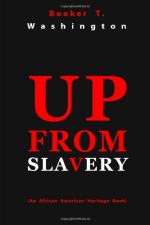Several days passed before anything more was heard about the matter. Some time afterward, one Sunday evening during the chapel exercises, a messenger came in and handed the general a telegram. At the end of the exercises he read the telegram to the school. In substance, these were its words: “Booker T. Washington will suit us. Send him at once.”
There was a great deal of joy expressed among the students and teachers, and I received very hearty congratulations. I began to get ready at once to go to Tuskegee. I went by way of my old home in West Virginia, where I remained for several days, after which I proceeded to Tuskegee. I found Tuskegee to be a town of about two thousand inhabitants, nearly one-half of whom were coloured. It was in what was known as the Black Belt of the South. In the county in which Tuskegee is situated the coloured people outnumbered the whites by about three to one. In some of the adjoining and near-by counties the proportion was not far from six coloured persons to one white.
I have often been asked to define the term “Black Belt.” So far as I can learn, the term was first used to designated a part of the country which was distinguished by the colour of the soil. The part of the country possessing this thick, dark, and naturally rich soil was, of course, the part of the South where the slaves were most profitable, and consequently they were taken there in the largest numbers. Later, and especially since the war, the term seems to be used wholly in a political sense—that is, to designate the counties where the black people outnumber the white.
Before going to Tuskegee I had expected to find there a building and all the necessary apparatus ready for me to begin teaching. To my disappointment, I found nothing of the kind. I did find, though, that which no costly building and apparatus can supply,—hundreds of hungry, earnest souls who wanted to secure knowledge.
Tuskegee seemed an ideal place for the school. It was in the midst of the great bulk of the Negro population, and was rather secluded, being five miles from the main line of railroad, with which it was connected by a short line. During the days of slavery, and since, the town had been a centre for the education of the white people. This was an added advantage, for the reason that I found the white people possessing a degree of culture and education that is not surpassed by many localities. While the coloured people were ignorant, they had not, as a rule, degraded and weakened their bodies by vices such as are common to the lower class of people in the large cities. In general, I found the relations between the two races pleasant. For example, the largest, and I think at that time the only hardware store in the town was owned and operated jointly by a coloured man and a white man. This copartnership continued until the death of the white partner.




